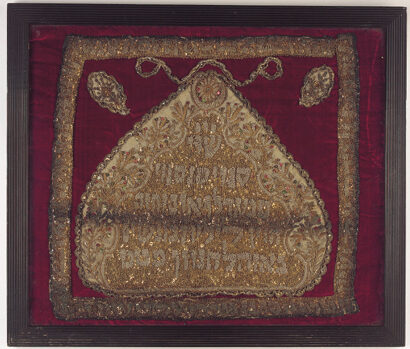Apathy
When considering aspects of history that showcase the struggles faced by a minority group, it is important to humanise the group in order to help visitors connect and empathise with the historical events. When visiting a museum, due to the volume of artefacts and historical evidence on site, many items can be overlooked. It is good to take a second look at some things you might have originally passed over or found boring, as they have hidden elements that can share more about history and culture than you would have initially assumed.
By Rebecca, Kate, Stanley and Ben
Explore the Collection
Pewter Plate for Purim Gifts
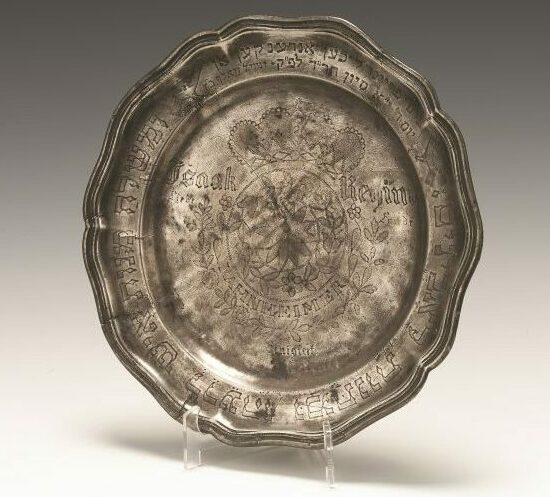
A pewter plate for Purim gifts with a shaped moulded rim. Engraved with geometric and floral ornament. Around the rim is a Hebrew inscription reading, ‘And the sending gifts each to his neighbour or gifts to the poor.’ A quotation from the Book of Esther about Purim gifts.
When you first come across the plate on display, you may feel apathy and view it as boring. However, when you take the time to look at the detail of the plate, you’ll be awe-struck. The plate holds a high religious value with references to Purim and the Book of Esther which is not noticeable until you look in a greater depth. It is also valued by its owner. After time and investigation the awe becomes immense.
How else can appearances be different and lead to a reduction in apathy?
Rebecca, Year 11
Tally Sticks
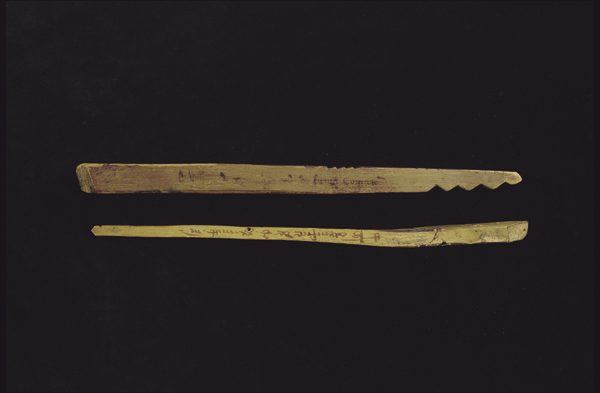
These sticks are archaeological evidence of the high taxation rates faced by Jews in the 13th century, showing the taxes of Isaac the butcher from Glasgow in 1241. The sticks are thin and wooden, and have writing carved onto them that detail Isaac’s taxes.
Medieval British Jewry faced merciless and excessive taxation, in an effort to further separate them from their non-Jewish peers. Nowadays, the problems faced by medieval Jewry are largely overlooked, forgotten, and ignored, even though it is incredibly important to take the time to remember the vast and rich Jewish history of Britain despite the length of time separating the 13th century and the 21st, and to be able to appreciate their daily lives and the struggles they faced.
How much did you know about Jewish life in medieval Britain before visiting the Jewish Museum London?
Kate, Year 12
Concentration Camp Uniform
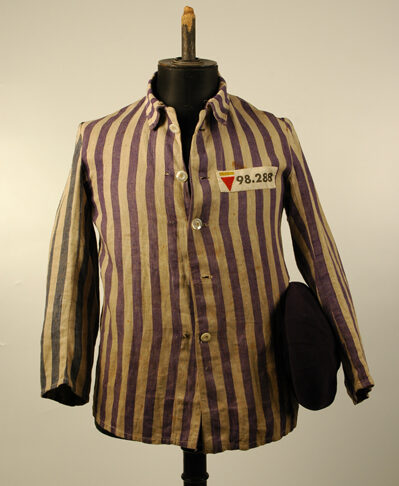
Blue and white striped Buchenwald uniform, consisting of a long sleeved jacket, trousers and beret. The uniform was worn by Leon Greenman at Buchenwald, the final camp he was held prisoner, and where he was finally liberated on April 11 1945. The number on the uniform (which is Leon’s number from Auschwitz, not Buchenwald) was added by a printer friend in France at the end of the war.
When Leon was in the camp, he was forced to wear this uniform no matter the weather or season which resulted in a great deal of suffering during the bitter winters. This is demonstrative of the apathy which the Nazis held towards the prisoners in the camps and their wellbeing and it helps to humanise what would otherwise be an inhuman garment. At first this uniform may be unassuming, although it has become a recognised symbol of the horrors of the Holocaust, however the addition of a human story to accompany it can dispel any sense of indifference that may arise when seeing such a simple garment.
How would Leon have felt wearing this through the cold winters?
Stanley, Year 12
Baron Nathan, the egg dancer
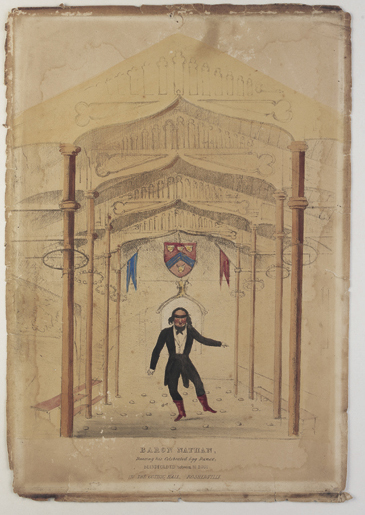
A picture of Baron Nathan dancing on a stage filled with eggs while blindfolded.
The picture looks boring at a first glance but has an interesting and funny story behind it.
Ben, Year 12
